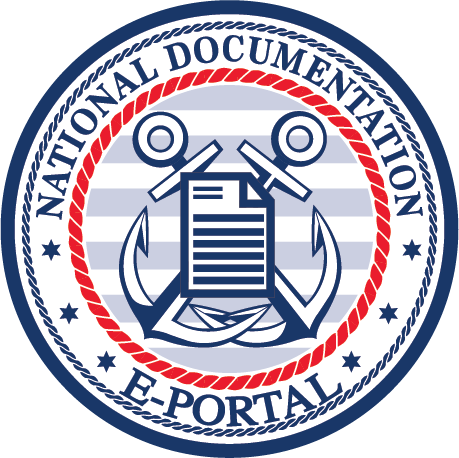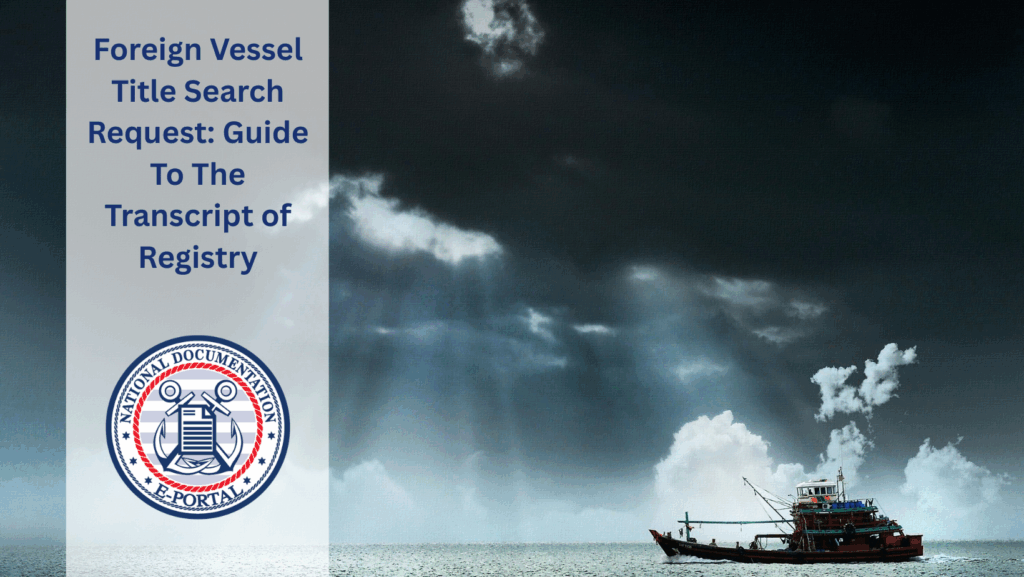If you are importing your vessel, or registering any other vessel that originates outside Canada, you should verify a vessel title and legal ownership. A Foreign Vessel Title Search Request contains complete and authoritative information as to a vessel’s title history and any liens, charges or encumbrances against it.
A Transcript of Registry is an official document which shows ownership of a ship or ships. It is usually required as part of a title search, when buying a ship, importing it to your own country or state of domicile from another country, or verifying ownership of a ship registered in another country.
What Is a Foreign Vessel Title Search Request?
Someone requests a Foreign Vessel Title Search when someone requests information from the maritime registry of a foreign country about a vessel registered outside the United States. These searches provide proof of ownership, verify the vessel’s registration status, and identify any liens or encumbrances recorded against it.
| Purpose | Description |
|---|---|
| Ownership Verification | Confirms the legal owner of the vessel. |
| Lien Check | Detects any mortgages, loans, or claims against the vessel. |
| Registry Confirmation | Validates that the vessel is officially recorded. |
| Transaction Transparency | Ensures buyers receive clear title before purchase. |
This request is usually accompanied by a Transcript of Registry, a certified document that gives the history, ownership and administrative information on the vessel.
Importance of Conducting a Title Search
- Prevents Fraud: Prevents purchase of ships with false ownership.
- Ensures Legal Compliance: Required by maritime authorities on importation.
- Eases Financing: Clean title verification is required to approve loans.
- The registry helps insurance companies verify ownership information for Insurance Requirements.
Skipping a title search could lead to costly disputes or loss of title to the property on a later date.
Understanding the Transcript of Registry
The Transcript of Registry is the official and most authoritative proof about ownership and registration history, and is provided by the national maritime authority of the country in which the vessel is registered.
Information Type refers to the category or nature of the information
It will name the vessel, number and weigh it, name and address current owners, date and port of register it, detail mortgages, liens, encumbrances and loans registered against the vessel, and history changes to name, ownership and the maritime flag register the vessel under.
Legal Recognition
The transcript also acts as prima facie evidence of ownership and encumbrances under international maritime law, and in jurisdictions such as the U.K., Canada and the Bahamas a transcript must be presented in order to import the vessel, transfer the registration or refinance the vessel.
The Process of Submitting a Foreign Vessel Title Search Request
To ease a Foreign Vessel Title Search Request, there is a defined process to ensure integrity and transparency in maritime activities.
Step 1: Identify the Maritime Authority
Each country has a vessel registration authority in Transport Canada, U.K. Ship Register, Australian Maritime Safety Authority, etc.; determine which one is responsible for the country where your vessel is registered.
Step 2: Collect Required Details
You will need to provide the following for me:
- Vessels name and official number.
- Port or country of registration.
- Estimated date of construction.
- Owner’s name (if known).
Step 3: Submit the Formal Request
The form to request abstract of title search may be filed online or by mail, depending on the property registry’s practice. Many registries also charge a fee for the transcript and search results usually between $25 and $75 USD.
Step 4: Obtain and Review the Transcript of Registry
After you process the request, you will receive from the maritime authority a certified transcript containing information on the vessel’s registration and ownership. You should check the information with care.
- Ownership name match.
- Mortgage status.
- Previous registration records.
| Step | Action | Outcome |
|---|---|---|
| 1 | Identify registry | Correct authority chosen |
| 2 | Gather vessel details | Ensures accurate search |
| 3 | Submit request | Formal review initiated |
| 4 | Receive transcript | Confirms vessel ownership |
Comparing Domestic and Foreign Vessel Title Search
The basic purpose, which is to establish ownership, still holds, but foreign title searches have additional procedures for international transactions.
- Domestic and foreign title search requests have grown from 2018 to 2024.
- Domestic title searches have gradually increased, suggesting a stable demand for transactions with U.S. vessels.
- Title searches for foreign boats have been increasing, especially since 2021 because more foreign yachts are imported.
- Foreign searches nearly doubled between 2018 and 2024 indicating increasing international demand.
The increase is due in part because of the growing number of second-hand yachts and commercial vessels sold internationally.
Common Issues in the Foreign Vessel Title Search Process
Requests for title searches may face delays or may not be compatible with other systems.
Common Problems
- Incomplete Information: Missing registry number or owner details.
- Unregistered Vessels: Digital registries might not record older or smaller vessels.
- Pending Liens: Unreleased mortgages of record can block the transfer of title.
- If you overcome language barriers: Certify translation for non-English documents.
Problem, Effect & Fix
-
Missing records can slow verification, so contact the registry to obtain the required information and keep the process moving.
-
Ownership issues may arise from an unreleased mortgage; requesting a lien discharge resolves this quickly.
-
When the transcript shows vessel identification errors, verify the serial number and hull number to correct the record.
-
Misinterpretation often occurs due to language inconsistencies, and using a certified maritime translator eliminates this risk.
These issues highlight the importance of proper documentation and communication with the relevant foreign registry.
Practical Tips for Completing a Successful Title Search
- Confirm the correct registry: Each country has its own registries and processes.
- Verify Hull Identification Numbers (HIN): This ensures correct vessel identification.
- Request Certified Copies: Only certified transcripts from are legally valid.
- Keep copies of letters: Bills, and other documents for looking things up.
| Tip | Purpose |
|---|---|
| Request certified transcript | Ensures legal admissibility |
| Use verified registry data | Prevents fraud or misrepresentation |
| Translate foreign documents | Ensures accurate interpretation |
| Consult maritime experts | Assures compliance and accuracy |
You can act to help prevent disputes and to protect your investment upon purchase from an overseas seller.
Legal Implications and Compliance Requirements
Legal Recognition
International maritime protocols like the United Nations Convention on the Law of the Sea (UNCLOS) allow individual countries to administer their own registries. Verifying a title can help ensure that a vessel complies with both national and international maritime law.
Compliance & Benefits
- Prevents ownership disputes.
- Eases customs clearance for imports.
- Helps obtain financing and insurance.
- Conducts due diligence in maritime transactions.
Ensuring Trust Through Proper Title Verification
National Documentation E‑Portal protects the ownership of a vessel, secure financial investments, and ensures compliance with existing international maritime laws and conventions.
A Transcript of Registry provides a detailed view of the ownership, liens, and registration history of a vessel, which provides valuable information for any marine transaction.
Due diligence protects your investment. Due diligence is the essence of trust, safety, and legality in international maritime and boating commerce. Information and documentation are your strongest anchors of security in international waters.

